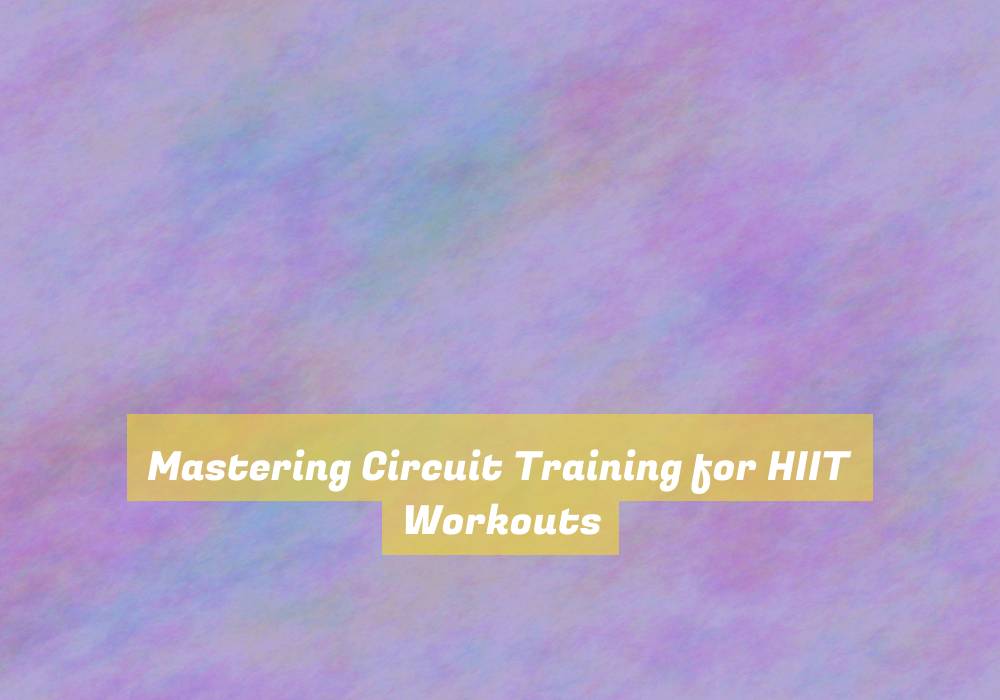Mastering Circuit Training for HIIT Workouts
If youG??re aiming to maximize your workout efficiency, did you know that circuit training can help you achieve just that?
With the ability to burn up to 30% more calories than traditional weight training and providing a significant cardiovascular benefit, mastering circuit training for HIIT workouts can be a game-changer for achieving your fitness goals.
But how do you design effective circuit workouts that truly optimize your time in the gym and deliver the results youG??re after?
ItG??s all about understanding the key components and exercises that make up a successful HIIT circuit, as well as the strategic rest periods that can take your training to the next level.
Benefits of Circuit Training for HIIT
Circuit training offers numerous benefits for HIIT workouts.
One of the main advantages is increased calorie burn. When you engage in circuit training for your HIIT workouts, you can expect to torch a significant amount of calories in a short period. This is because the high-intensity nature of circuit training keeps your heart rate elevated, leading to a greater calorie expenditure compared to traditional steady-state cardio.
Additionally, the varied exercises in a circuit keep your body constantly moving, further contributing to the calorie-burning effect.
Moreover, circuit training enhances your cardiovascular endurance. The combination of strength and aerobic exercises in circuit training challenges your heart and lungs as you move from one exercise to the next with minimal rest. This continuous challenge leads to improvements in your overall cardiovascular fitness.
This not only benefits your HIIT performance but also translates to better endurance for daily activities.
In essence, circuit training for HIIT offers a potent combination of calorie-burning and cardiovascular benefits, making it a highly effective workout strategy.
Designing Effective Circuit Workouts
To design effective circuit workouts, consider the specific fitness goals and target muscle groups you want to focus on during each session. Whether your aim is to improve cardiovascular endurance, build strength, or achieve weight loss, tailoring your circuit workouts to align with these goals is crucial.
For instance, if youG??re focusing on strength training, include exercises that target major muscle groups such as squats, deadlifts, and push-ups. On the other hand, if your goal is to enhance cardiovascular fitness, incorporate high-intensity exercises like burpees, jumping jacks, and mountain climbers.
Additionally, ensure that your circuit workouts are well-balanced, targeting different muscle groups throughout the session to prevent overuse and promote overall strength development.
Furthermore, pay attention to the intensity and duration of each exercise within the circuit to maintain a balance between pushing your limits and allowing for adequate recovery.
Key Exercises for HIIT Circuit Training
When designing effective circuit workouts, itG??s essential to incorporate key exercises for HIIT circuit training that align with your specific fitness goals and target muscle groups.
High-intensity interval training (HIIT) focuses on short bursts of intense exercise followed by brief rest or recovery periods.
Key exercises for HIIT circuit training often include bodyweight movements such as burpees, mountain climbers, and jumping jacks to elevate your heart rate and engage multiple muscle groups simultaneously.
Additionally, dynamic movements like kettlebell swings, squat jumps, and plyometric lunges are effective for building strength and power.
To challenge your cardiovascular endurance and upper body strength, exercises like battle ropes, box jumps, and medicine ball slams are excellent choices.
ItG??s also important to include core-strengthening exercises like planks, Russian twists, and bicycle crunches to enhance stability and overall functional strength.
Optimizing Rest Periods for Maximum Results
Optimizing rest periods during HIIT circuit training maximizes your workout effectiveness and enhances overall performance. The key is to find the balance between pushing yourself and allowing enough time for recovery.
Shortening rest periods can increase the intensity of your workout, promoting greater calorie burn and cardiovascular benefits. However, be cautious not to shorten them so much that it compromises your form and leads to decreased performance.
On the other hand, longer rest periods allow for more complete recovery between exercises, enabling you to maintain a high level of effort throughout the entire workout. ItG??s crucial to listen to your body and adjust your rest periods based on your individual fitness level and goals.
For strength-focused circuits, slightly longer rest periods of 30-60 seconds between exercises may be beneficial, while for cardio-focused circuits, shorter rest periods of 15-30 seconds can keep your heart rate elevated.
Ultimately, optimizing your rest periods is about finding the right balance to challenge your body while preventing overexertion and minimizing the risk of injury.
Conclusion
YouG??ve learned the benefits of circuit training for HIIT, how to design effective workouts, key exercises to incorporate, and how to optimize rest periods for maximum results.
By mastering circuit training for HIIT, you can elevate your fitness routine and achieve your goals more efficiently.
So, keep pushing yourself and incorporating these techniques into your workouts to see the best results.
YouG??ve got this!






